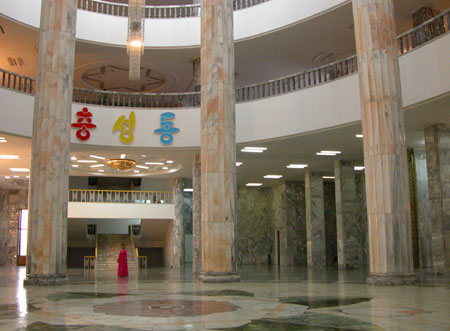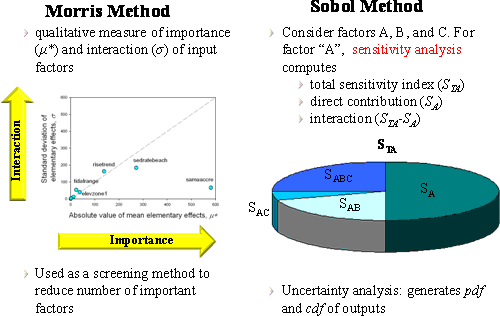Contents
Section 1.0 Oscillator Basics.• Typical oscillator types & applications. The sawtooth waveform represents the deflections in the form of teeth. The wave rises upwards and sharply https://1investing.in/ drops and again rises upwards. The feedback of the amplifier must be positive or regenerative. Arrows are shown at the entry points at which the RSI bounces off the 30 level.

The negative resistance oscillators operate well at high frequencies. The feedback oscillators at high frequencies fail to produce the desires results. The circuit consists of inductor and capacitor connected to form a tuned LC oscillator.
Negative-resistance oscillator
Fritz Lowenstein may have preceded the others with a crude oscillator in late 1911. In Britain, H. J. Round patented amplifying and oscillating circuits in 1913. Armstrong and De Forest fought a protracted legal battle over the rights to the “regenerative” oscillator circuit which has been called “the most complicated patent litigation in the history of radio”. De Forest ultimately won before the Supreme Court in 1934 on technical grounds, but most sources regard Armstrong’s claim as the stronger one. Is high enough that the loop gain is unity at one of these frequencies, the circuit will oscillate at that frequency.
The frequency generated by the crystal is susceptible to temperature changes. Figure 11 shows a circuit made of electrical components that are equivalent to a crystal. A circuit with a stable high frequency is the crystal controlled oscillator.
An audio signal has a frequency of 330Htz and would only travel a few meters before it fades away. A high-frequency signal in the range of megahertz and gigahertz would travel thousands of meters away before fading. Where could this high frequency come from, the answer is an oscillator.
It is a nonrotating device for producing alternating current, the output frequency of which is determined by the characteristics of the device. The initial purpose of an Oscillator is to generate a given waveform of a constant peak amplitude and specific frequency and to maintain this waveform within certain limits of amplitude and frequency. Virtually every printed circuit board made in recent history has an oscillator of some form on it, and most integrated circuits contain oscillators too. Oscillators are essential components that produce a periodic electronic signal, typically a sine wave or square wave. Oscillators convert DC signal to periodic AC signals which can be used to set frequency, be used for audio applications, or used as a clock signal. All microcontrollers and microprocessors require an oscillator to set the clock signal in order to function.
The waveforms produced by the oscillators are sinusoidal, triangular, square, and sawtooth. All these waveforms can operate The World’s Top 10 Economies by Per Capita GDP in various ranges, such as [0. Feedback circuit- This circuit is used to provide positive feedback to the input.
- 3.13 illustrates the low impedance at series resonance ƒ1 and high impedance at parallel resonance ƒ2.
- At that time the transistor starts conduction and the cycle is repeated.
- In addition to the application, determine the types of oscillator to be used.
- The basic block diagram of an oscillator is shown in Figure 2.
- Further hre is so small that its effect may be ignored for many practical circuits.
- The value of this resistor varies with the deice voltages, variation in process and temperature.
In radio, the carrier frequency varies from 550 KHz to 20 MHz for TV broadcasting in radio and TV receiver’s high frequency oscillators are required. The Quartz oscillator is the most common type of crystal oscillator on the market. Where accuracy and stability are critical, the primary choice is crystal oscillators and their variants. A crystal oscillator stability is measured in ppm , and stability could be somewhere around 0.01% to 0.0001% over -20 to +70 Celsius, depending on the specific device. An RC oscillator’s stability can at best be 0.1% and LC 0.01%, they are more typically around 2% and are very sensitive to temperature changes.
Barkhausen criterion for oscillations
These oscillators use quartz crystals and are used to generate highly stabilized output signal with frequencies up to 10 Mhz. The pierce oscillator is an example of a crystal oscillator. An oscillator must provide amplification and a portion of the output is feedback to sustain the input, as shown in Fig. Enough power must be feedback to the input circuit for the oscillator to drive itself as in case of signal generator. The oscillator is self-driven, because the feedback signal is regenerative i.e. positive feedback.

A 120 MHz oscillator from 1938 using a parallel rod transmission line resonator . If a heavy point mass is suspended by a weightless, inextensible, and perfectly flexible string from rigid support then this arrangement is called a simple pendulum. It was capable of producing electric arcs used for lighting. It was first noticed by a Cornish chemist named Sir Humphry Davy.
Crystal Oscillator Modules
The output power with a push- pull connection is increased and harmonics are decreased. The feedback is achieved by capacitive coupling from the plate tank back to the input. The 180° phase shift can be obtained by tapping to opposite sides of the tank. For high frequencies the push-pull connection is found to be useful. An oscillator may be defined as an active device that generates sinusoidal or other repetitive waveforms. Important characteristics of an oscillator are its frequency and amplitude stability, harmonic content and output power.
Triangle-wave or sawtooth oscillators are used in the timebase circuits that generate the horizontal deflection signals for cathode ray tubes in analogue oscilloscopes and television sets. In general, relaxation oscillators are used at lower frequencies and have poorer frequency stability than linear oscillators. An electronic oscillator is an electronic circuit that produces a periodic, oscillating electronic signal, often a sine wave or a square wave or a triangle wave. Oscillators convert direct current from a power supply to an alternating current signal.

The vast majority of projects will not need anything beyond a TCXO from the list below, but you might find them interesting to research further. To overcome the difficulties tuning the Colpitts oscillator to a specific frequency in production, a variable capacitor in series with the inductor is often added, forming a Clapp Oscillator. This modification allows the circuit to be tuned during production and servicing to the specific frequency required. Unfortunately, this type of LC oscillator is still quite sensitive to temperature fluctuations and parasitic capacitances.
Operational Amplifier Oscillator Circuit
It is used in radio communications, broadcasting stations, and in equipment requiring a fixed frequency with little drift. At point A, the two current components are separated and required to take parallel paths. Both oscillators receive their feedback energy through magnetic coupling. From this circuit, the basic theory of oscillators can be explained. The frequency of the Oscillator circuit is called as the resonant frequency. The resonant frequency is expressed in terms of inductance and capacitance.
This cascade of networks forms the base for the RC oscillator, otherwise known as Phase Shift Oscillator. The world game-changer, a miracle I would call it-the radio is a device that revolutionized communication. A speaker can reach out to the whole world verbally using this device. When you start wondering how an oscillator is a radio, let me present to you the great challenge solved by an oscillator.
This alternate charging and discharging of capacitor and inductor will produce continuous oscillations. This is due to the non-linear behaviour of the feedback amplifier circuit. Hence, each time after passing the loop the amplitude of the signal will get reduced.
A microwave cavity can be tuned mechanically by moving one of the walls. It’s frequency can be changed slightly by using a trimmer capacitor in series or parallel with the crystal. An RC Oscillator (resistor-capacitor) is a type of feedback oscillator which is built using resistors and capacitors, along with an amplifying device such as a transistor or operational amplifier. The amplifying device feeds back into the RC network, which causes positive feedback and generates repeated oscillations. This stabilizes the loop gain at an amplitude below the saturation level of the amplifier, so it does not saturate and “clip” the sine wave. Resistor-diode networks and FETs are often used for the nonlinear element.
The resonant frequency is inversely proportional to capacitance as well as inductance. This process of charging and discharging of the capacitor and inductor will continue forever unless the process is terminated externally. In this way, the capacitor will charge at a time, and then inductor will charge at another point of time. The oscillators are available in wide range of frequencies.
